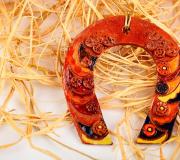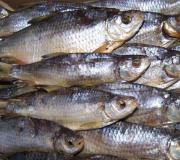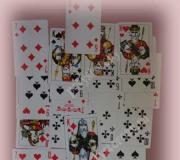Masters of Chinese watercolor. Watercolor ballet
The master of watercolor is the Chinese artist Liu Yi. Born in Shanghai in 1958. Graduated from East China Normal University, Faculty of Art. He also studied at the Chinese Academy of Arts in watercolor. He held significant positions in various art associations in China...
The master began to learn drawing from childhood. And since childhood I studied ballet. But since “my face is too round, not for ballet,” jokes Liu Yi, painting won. And ballet became a part of it.
At painting school, Liu Yi was always an excellent student. He started with oil painting from the famous Chinese painter Chen Yi Wei, and also studied Chinese traditional painting. The artist had every chance of becoming successful and rich, “driving a Ferrari,” since these are the types of paintings that are in demand in China. But in 1982, Liu Yi visited a watercolor exhibition and, as they say, disappeared. He realized that watercolor was his destiny. And even if this painting is not valued in China, even if he has a Porsche instead of a Ferrari, but he will paint in watercolors! So at the university, Liu Yi learned to paint with watercolors.


















About Liu Yi's painting technique.
The master uses paints in tubes from Winsor & Newton, Van Gog and Korean Mission.
Interestingly, for portrait painting he uses very bright basic colors: hot pink and blue. Actively uses burnt sienna for warm areas and mixes it with ultramarine to create gray shades. There are no whitewash colors in his set. Except it's pink.
It is noteworthy that Liu Yi does not immediately paint with a new brush. First, he beats it for six months and washes his palette with it. The brush becomes softer, more pliable, and acquires the quality it needs.
The second working brush is a wide soft flute for wetting the paper and writing backgrounds.
And the third is a flat brush made of hard synthetic material with short bristles. The artist uses this brush to select bright areas.
Before work, Liu Yi wets the sheet on both sides, stretches it on a tablet or plexiglass and secures it with adhesive tape along the edges. As soon as the paper dries on top, the drawing is made immediately with a brush, using a light ocher solution. Lets the drawing dry and wets it again. A portrait is painted on a barely damp surface, a landscape - on a dry one.
Chinese artist Liu Yunsheng, who at the age of 75 won first place in the international watercolor exhibition in 2012 in Sefeihisar (Turkey), impressed me with his works.
In third international competition Artists from all over the world took part in watercolor painting, but the Chinese deservedly received the first three places.
Liu Yunsheng – a real maestro of watercolor And . He is a member of the Chinese Artists Association, revered as an influential folk artist. About his life and creative activity little is known, all I could find about him was the fact that the artist graduated art college, is now retired and paints for pleasure and shares his works with the whole world. Gave him this opportunity prize place at an international competition.
This artist has many various works And watercolor landscapes, animals, flowers, but portraits of adults and children occupy a special place. The master managed to achieve not only perfection in image technology human face, but also to capture the mood, state of mind of the person depicted. Stunning watercolor works by children, Liu Yunsheng conveys the depth of a child's innocent gaze through paint and paper. When you look at such a portrait, it seems that these children know something more than many adults. I think this is what the competition jury was able to evaluate and choose just such a work (pictured below).

I am currently very focused on watercolor painting, and I am attracted to artists who have achieved high results in this field. In portraiture, it was Liu Yunsheng who achieved the greatest results, I think you will agree after viewing his work.






And a little bit watercolor portraits adults, but no less impressive. 


Video of participants and winners international exhibition watercolors.
Useful! After watching the wonderful watercolor works, you can go to view and purchase beautiful bags, wallets and jewelry In the online store a-shop. And thoroughly prepare for winter, for this you will find a section where big choice hats, scarves and gloves. As they say: “prepare your sleigh in the summer.”
Subscribe to updates and receive news and posts from the TworiSmelo website!
A teacher from North Carolina stayed at art gallery many times to admire one painting - “The Joy of Autumn”. The first Chinese watercolorist Guan Weixing captivated him.
Despite his great desire, his teacher's salary was not enough to afford such a painting. However, lack of funds did not stop him. He mortgaged his house to buy it. Gallery owner Jackson Mayshark shared this story with The Epoch Times, to convey the impact Guan's watercolors have on visitors.
Mayshark explained how he discovered this artist. He was amazed when he saw a friend's copy of the watercolor printed on a computer: “When I saw the drawing, my jaw dropped.” He asked who the author was and then set out to bring Guan to the United States.
The artist's exhibition, held in Greensboro, North Carolina, created a sensation. People wanted to shake his hand. Surprisingly, some visitors said that this Chinese gentleman reminded them of their father. Others froze in front of the paintings with tears in their eyes.
The Epoch Times interviewed Guan on the final day of his exhibition at the National Art Club in New York. His mentor was a Romanian watercolorist who taught only a large number of students. Over time, thanks to his studies, he had the opportunity to travel a lot. During his trips, he took a large number of photographs, from which he later painted his paintings.
Perhaps the secret to Weixin's success lies in his instrument. The artist uses a brush that absorbs a large amount of water, thanks to which his works are filled with depth and life. The brushes are made from the coarse hairs of an animal native to China that looks like a wolf and has no name in English. With a laugh, Guan recounted how, during a visit to Tunisia, his fans claimed that Guan's success lay in his brushes. As a result, he did not bring home all the brushes he took with him. He buys high quality paints from England and paper from France.
Walking through the huge room filled with his works, it was impossible not to recognize the artist’s talent. In his paintings, he demonstrates not only his excellent mastery of watercolor painting techniques, but also his love for his models, no matter whether it was an old peasant from Shanbei or a young Tajik bride.
His works are presented a pleasant surprise. Many of the portraits of non-Asian residents look as if they were painted by a skilled European artist. When visiting the exhibition, the reporter was surprised to see portraits of people not from China, which were painted with the same warmth as the artist's compatriots.
Not only Europeans, but also national minorities deserve the same heartfelt attention. Portraits of people in national costumes, such as Miao Girl, demonstrate the amazing craftsmanship that can be seen in Rembrandt's works, created not for money, but for the love of art.
Comparisons with Rembrandt are suggested by the skillful use of light. People are bathed in light and, nevertheless, on their faces, especially in the portraits of elderly Chinese peasants, every wrinkle is written out and the imprint left by a long life is conveyed.
The combination of mature technical skill and sympathy for his models makes Guan Weixing an exceptional artist who has managed to raise watercolor painting to such a height.
English version
Would you install an application on your phone to read articles from the epochtimes website?
Shanghai artist Liu Yi is recognized as a master of watercolor and is the owner of many prestigious awards and awards. In 2018, Liu Yi will turn 60 years old. As a child he was attracted to traditional Chinese art ink and ballet. Liu Yi was educated at the Faculty of Art of East China Normal University and studied watercolor at the Chinese Academy of Arts. It so happened that he ballet career It didn’t work out, but a bright career as an artist developed.




The artist created his own original style of working with watercolors: he does not use white paint. For ballet genre scenes and portraits, he wets watercolor paper on both sides with water, and paints landscapes exclusively on dry paper. The master uses watercolors in tubes and works with a minimum number of brushes (a couple of brushes for painting, a flute for filling, synthetic for washing out/selecting color).
In terms of his passion for the theme of ballet, Liu Yi’s works are often compared to the works of Edgar Degas. However, such a comparison is only true in that both masters were in love with ballet as an art form. Edgar Degas considered the main thing for himself to capture the movement of the dancer, to convey the instantaneousness and ephemerality of ballet. In Liu Yi’s works, the main thing is not movement, but the precision and beauty of the pose adopted by the ballerina. His dancers froze in a space filled with transparent light like hieroglyphs, and it doesn’t matter how long they hold this pose. All that matters is the infinite grace of this specially adopted step. The bright and joyful coloring of Liu Yi’s paintings sounds like a hymn to art classical dance, and his ballerinas are unearthly aerial creatures who soar in streams of light like lovely elves.



Liu Yi's works are successfully sold at Sotheby's and are in private collections different countries peace. Several of his works are considered treasures chinese art stored in National Museum China.

From June 6 to June 12 I was on a course with Chinese master watercolors by Liu Yi. I wrote how it was.
And I asked readers to write their questions to the master. Most I managed to ask one of them, so today I’ll tell you about it.

Well, what can I tell you, I’m delighted with Liu Yi. Not only as an artist, but also as a person.
Liu Yi is a very close and understandable person to us. In contrast to the international crowd, he, like us Russians, languished over long dinners in Spanish, communicated without a trace of stardom and tried to help everyone - move something or bring a suitcase.

Liu Yi advises students on their homework
He himself emphasized that Russian people and art are close to him. The Chinese have learned a lot from our academic school of painting and always look at creativity Russian artists. This is probably why during the master class I constantly had the feeling that I was looking at the work of a master from the period of socialist realism.

Of course, Liu Yi's works are very romantic. Looking at him, you get the feeling that he lives in some kind of his own world, where everything looks beautiful and sublime. The portraits he painted from life were not at all a copy of the person being portrayed. The flamboyant Mona from Madrid, whose Iranian features inspired two portraits by the master, in his watercolors was as fair-skinned and light-eyed as all his ballerinas.

In his portraits, Liu Yi seems to set the task not to depict the image of the person who sits in front of him, but to create beautiful piece art. Therefore, he adjusts the models’ facial features in accordance with his idea of beauty: whiter skin, smaller nose, eyes... yes, the eyes are also a little smaller than in real life... Apparently, this is a Chinese mentality...

The master began to learn drawing from childhood. And since childhood studied ballet. But since “my face is too round, not for ballet,” jokes Liu Yi, painting won. And ballet became a part of it.
At painting school, Liu Yi was always an excellent student. He started with oil painting from the famous Chinese painter Chen Yi Wei, and also studied Chinese traditional painting. The artist had every chance of becoming successful and rich, “driving a Ferrari,” since these are the types of paintings that are in demand in China. But in 1982, Liu Yi visited a watercolor exhibition and, as they say, disappeared. He realized that watercolor was his destiny. And even if this painting is not valued in China, even if he has a Porsche instead of a Ferrari, but he will paint in watercolors! So at the university, Liu Yi learned to paint with watercolors.
About Liu Yi's painting technique.
The master uses paints in tubes from Winsor & Newton, Van Gog and Korean Mission.
Interestingly, for portrait painting he uses very bright basic colors: hot pink and blue. Actively uses burnt sienna for warm areas and mixes it with ultramarine to create gray shades. There are no whitewash colors in his set. Except it's pink.

Brushes in the master's pencil case there are pairs. At first I thought he used different ones for warm and cool shades. However, it turned out that in reality he actively uses only one thing - a large Chinese dark bristle brush (apparently, this is a wolf). As he works, he flattens it so that he gets a flat tip instead of a thin one. And in this way he paints both large fills and, turning them edge-on, small details.

It is noteworthy that Liu Yi does not immediately paint with a new brush. First, he beats it for six months and washes his palette with it. The brush becomes softer, more pliable, and acquires the quality it needs.
The second working brush is a wide soft flute for wetting the paper and writing backgrounds.
And the third is a flat brush made of hard synthetic material with short bristles. The artist uses this brush to select bright areas.

Paper grades for work: Arshes, Fabriano, 100% cotton, grain fin or rough fin.
Before work, Liu Yi wets the sheet on both sides, stretches it on a tablet or plexiglass and secures it with adhesive tape along the edges. As soon as the paper dries on top, the drawing is made immediately with a brush, using a light ocher solution. Lets the drawing dry and wets it again. A portrait is painted on a barely damp surface, a landscape - on a dry one.

Working on a portrait, to make a soft flow of paint, moves “away from the piece.” Those. selects an area that will have time to write on the wet one, fills it first light shades soft pink and lilac colors, they introduce warmer and darker ones. Write this place until the paint sets. Details and dark areas, eyes, for example, are painted in a second layer.

When working on a still life, he begins to paint from the background in order to create an environment, and in a portrait - from the head, so as not to lose the freshness of the impression.
If the work is large, then he can write it in several sessions, continuing to go from section to section. The artist does not use a hairdryer. He expertly controls the amount of water on the brush and the moisture content of the paper.
Liu Yi does not rule out the use of reserve, fluid mask, but never uses white. Confirms that avoiding whitewash is a sign of mastery.
About composition, purpose and creative crisis.
China, due to the peculiarities of traditional painting and calligraphy, has produced many virtuoso watercolorists. The reason, as Liu Yi thinks, is that the Chinese have been accustomed to working with a brush since childhood. They already initially have a sense of line and spot, a feeling of dryness and wetness of the brush when working with ink on rice paper. In addition, Chinese painting itself, with its stylization and symbolism, special perspective, shapes right attitude to watercolor as to graphic technology. In this case, the artist does not become a slave to nature, he transforms it into the image he needs.

For big ones serious work the master definitely does sketches. He says it's especially important to think through the composition before applying it to a large sheet. After all, watercolor does not forgive mistakes. Therefore, sometimes he writes both the second and third versions of the picture. Although sometimes a sketch from life in the open air can be much fresher and more interesting than its possible double. It has the main thing - impression.
Liu Yi sees artist's purpose is to reveal to others the beauty of the world. “The artist has a different view of the world. There are many people who don't understand and don't like ballet. But looking at my paintings, they see how beautiful it is. And this side of life is revealed to them.”




